The Cornell Lab Bird Academy › Discussion Groups › Nature Journaling and Field Sketching › Jump Right in!
-
 1. It was fun and interesting to draw from the photo. I noticed right away that preparing to draw/paint made me look much more closely at the details of the bird. The general shape was easy but capturing the nuances is hard. The particular way the bird is holding his head and body is hard to capture. 2. There is lots in the photo I would not have noticed, like the streaks of red on the breast and how some of the wing and tail feathers are primarily black. I would like to learn how to capture some of these important details without getting too hung up on trying to produce a ‘technical drawing’ of whatever I am seeing.
1. It was fun and interesting to draw from the photo. I noticed right away that preparing to draw/paint made me look much more closely at the details of the bird. The general shape was easy but capturing the nuances is hard. The particular way the bird is holding his head and body is hard to capture. 2. There is lots in the photo I would not have noticed, like the streaks of red on the breast and how some of the wing and tail feathers are primarily black. I would like to learn how to capture some of these important details without getting too hung up on trying to produce a ‘technical drawing’ of whatever I am seeing. -
1. Drawing from the photo was fun! The fact the bird is sitting still makes it easier. When drawing from a photo the challenge is not experiencing the habitat. 2. I didn't see the moss on the sticks until we had to look closer to make the artwork. And yes, that makes a difference with nature journaling for sure.

-
1. Drawing from photos is my comfort zone. Yet, in this particular pic, it was hard for me to catch the proportions/shape of the bird. 2. The proportion of the head to the body, and the tail to the body. Yes, the shape is very important for nature journaling, because it is part of the identification process.
-

-
@Risa As you mentioned, shape and proportion are an important part of the ID process, and for a birder, the most important part that identifies a bird as a warbler is the bill. You did a great job of capturing the size, shape, and proportion of the Yellow Warbler's bill.
-
-
 This was tricky for me but I will say it’s a lot easier when the bird isn’t moving lol. Excited to see how I improve
This was tricky for me but I will say it’s a lot easier when the bird isn’t moving lol. Excited to see how I improve -

-
1. At the beggining I felt it was really difficult, I thought the backgruond was easier to start on. 2. A lot of details in colors, shapes, shadows, etc.

-
sketching created a type of investment into the process.
-
1. Drawing from a photo has the clear advantage of the stillness of the subject. I can't imagine being able to capture the tiny claws of a warbler from life. I can't say any of it came easily, but I enjoyed the process of trying. The flatness of the near-consistent yellow of the bird made indicating any kind of contour -- already a challenge -- even harder. 2. Even though I am a "plant person" I spent some time thinking about what kind of twig this was, even though I didn't try to draw it. Considering the context of where the subject is (and where I am) will be an interesting aspect of nature journaling, I think.

-

-
My first attemt was in charcoal pencil, this one is in graphite pencil. Much room for improvement, and I look forward to getting better.

-
It's been years since I've drawn and seems I'm more free-form in my later years, but it was fun and I can see how much I can improve. Very exciting!

-
As an avid birder, the challenge is getting the right proportions on a bird I know very well. I am keen to learn to illustrate what I see rather than what I know to be true from lots of experience observing. I have a long way to go, excited for this challenge.

-
Drawing from photo was good. I noticed a lot of details I wouldn’t ordinarily see.
-

-
1. Was very thankful the image wasn't moving! The biggest challenge was proportion. 2. The beak shape, especially the curve at the tip. Helps to understand a warbler beak a little better. Yes, this will help journaling!
-

-
At first I was nervous about getting the drawing “just right”, but then I relaxed and just did my best to notice curves and small shapes and put them together. My goal for this class is to learn to observe more in nature and make a record for myself of what I saw. So I need to be nice to myself and have fun. I had a hard time getting the shape of the head and beak to look natural, but I feel good about what I got in the end. I might not have noticed the texture of the bark and mosses. I think the branch, leaves, and moss all help tell the story.

-
I appreciated drawing from a photo because it didn't move. When I looked at it on my phone I noticed the colors, and when I expanded it on my desktop computer, I was amazed at the details. In my brain, I think of feathers one way, but in the photo, you see how many different textures and colors are really present. I was also surprised by the size of the bird's claws - I don't think I would have noticed that if not for the photo. Until I read other's comments, I wasn't really paying attention to the context - the branch. I usually watch birds at my feeders, but I'm sure that where this bird is perched is significant - hence, the importance of noting PLACE in my journaling.

-
My first sketch...I spent about 25 minutes. I feel that the detail and shading are most challenging. Also getting the proportions right. It's interesting how a slight variation in head shape and beak length will change the bird completely. My first attempt is very elementary and I look forward to improvement.

-
Water colors are a lesser-used medium for me. I found myslef applying the color as I would with an acrylic and that was problematic. I thoroughly enjoyed the beautiful detail in the feathers. All in all the end product was not too bad but I definately have tons of room to grow .
-
It appears easy to see the bird, the branches and leaves. I did use the round ball approach, perhaps easier to see as it was "still". I expect the detail would be quite different in the field, learning what to note and what to omit may be a challenge?
-
Some comfort in drawing from photo, but I notice it doesn’t feel very dynamic. I tried drawing the underlying circle and egg shapes, then a contour drawing. The contour drawing worked better for me since I had to look at it so carefully; with the shape approach I was more in my head. I notice the color of the stripes on the chest through drawing, even though I wasn’t using color.
-
At first I was intimidated, but it was a bit easier than I thought. Drawing the various types of feathers is challenging. wouldn't have paid as close attention to that if I was not drawing it. I also paid more attention to the various angles of the body and the negative space (learned about that in Liz's last class.) Since it was a photo, I didn't even think to write notes until I looked at the comments below. I think a photo is definitely easier for birds that don't stay still but I would love to be able to draw more quickly and capture general gestures of wildlife on the move.
-
I appreciate drawing from a photo because I can spend as much on details as I want. I can really pay attention to the direction and length of feathers, the light in the eye and beak and the strength and grip of the bird. I absolutely cannot accurately portray feathers - I get lost in the number and closeness of the various lengths and shapes (ugh). I think when nature journaling, I might use my experience from drawing from a photo to better understand the shape of birds I regularly see and allow the journaling to capture posture and action and the context of the garden, yard, trail, etc.
-
 As you can see the proportions are off and values aren’t necessarily interesting to view. I was struck by the ease that one of the sample journal artists drew his birds. They were believable images.
I really want to capture the essence of what I am seeing. My feelings about the subject.
So much to learn and practice as I ease into another phase of life. How can I share the importance of small spider mites?
Anytime I post a drawing I am afraid of what I didn’t accomplish or portray. Once it is posted it is available to the world at large for critical view.
As you can see the proportions are off and values aren’t necessarily interesting to view. I was struck by the ease that one of the sample journal artists drew his birds. They were believable images.
I really want to capture the essence of what I am seeing. My feelings about the subject.
So much to learn and practice as I ease into another phase of life. How can I share the importance of small spider mites?
Anytime I post a drawing I am afraid of what I didn’t accomplish or portray. Once it is posted it is available to the world at large for critical view. -
This is beautiful! You captured the intelligence of the bird. You must already be an artist.
-
Read More:
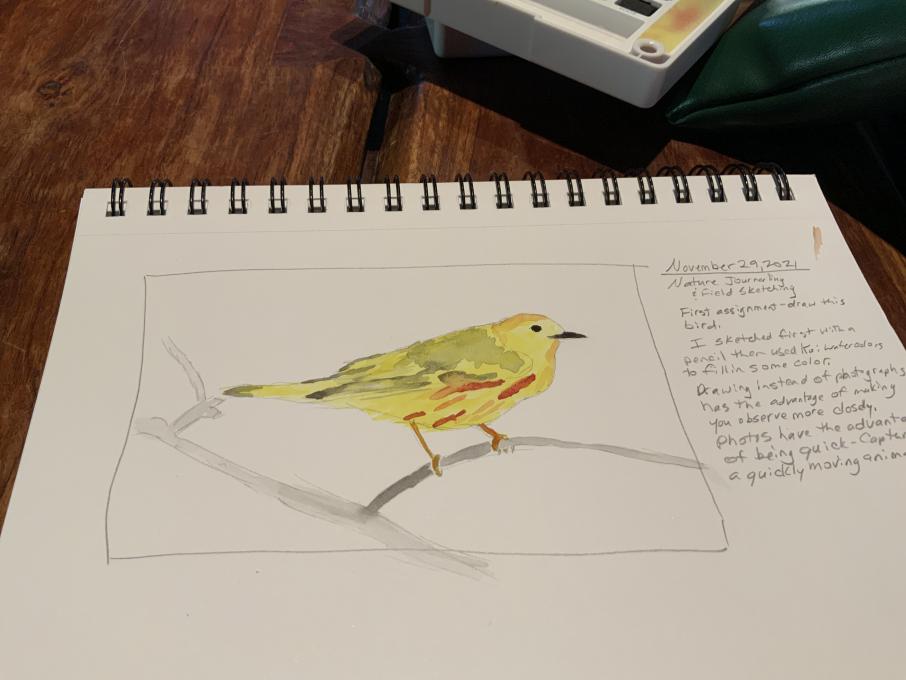 1. It was fun and interesting to draw from the photo. I noticed right away that preparing to draw/paint made me look much more closely at the details of the bird. The general shape was easy but capturing the nuances is hard. The particular way the bird is holding his head and body is hard to capture. 2. There is lots in the photo I would not have noticed, like the streaks of red on the breast and how some of the wing and tail feathers are primarily black. I would like to learn how to capture some of these important details without getting too hung up on trying to produce a ‘technical drawing’ of whatever I am seeing.
1. It was fun and interesting to draw from the photo. I noticed right away that preparing to draw/paint made me look much more closely at the details of the bird. The general shape was easy but capturing the nuances is hard. The particular way the bird is holding his head and body is hard to capture. 2. There is lots in the photo I would not have noticed, like the streaks of red on the breast and how some of the wing and tail feathers are primarily black. I would like to learn how to capture some of these important details without getting too hung up on trying to produce a ‘technical drawing’ of whatever I am seeing. 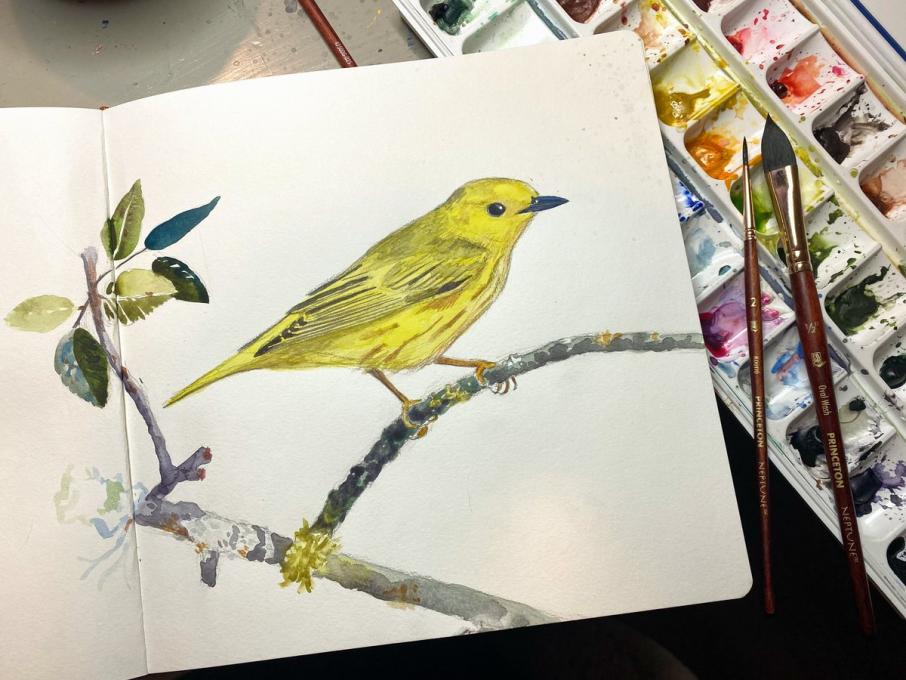
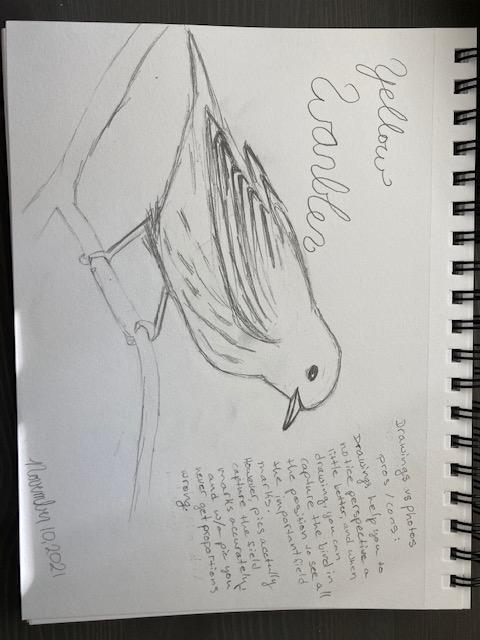
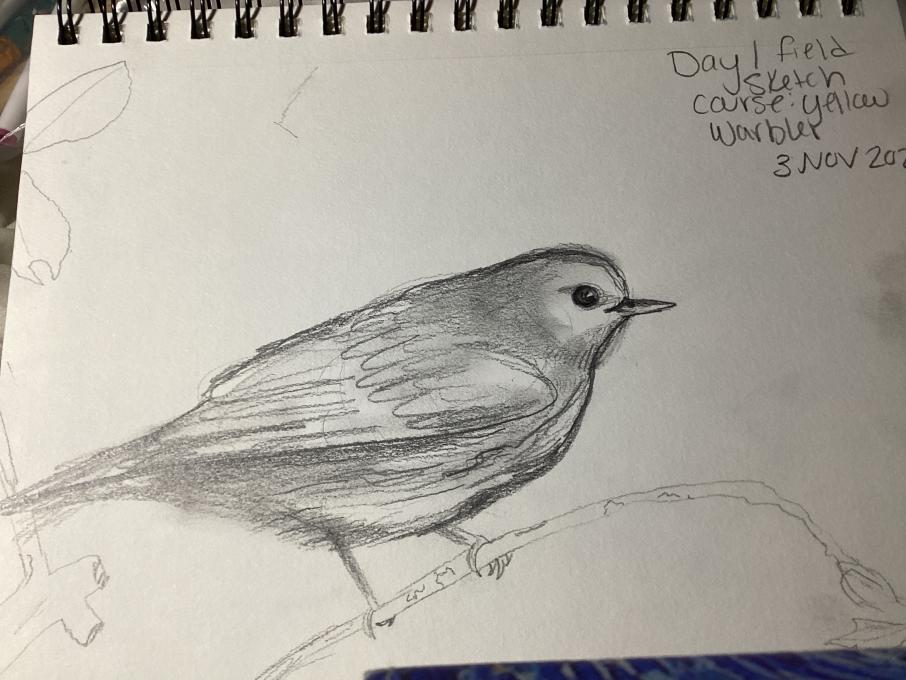 This was tricky for me but I will say it’s a lot easier when the bird isn’t moving lol. Excited to see how I improve
This was tricky for me but I will say it’s a lot easier when the bird isn’t moving lol. Excited to see how I improve 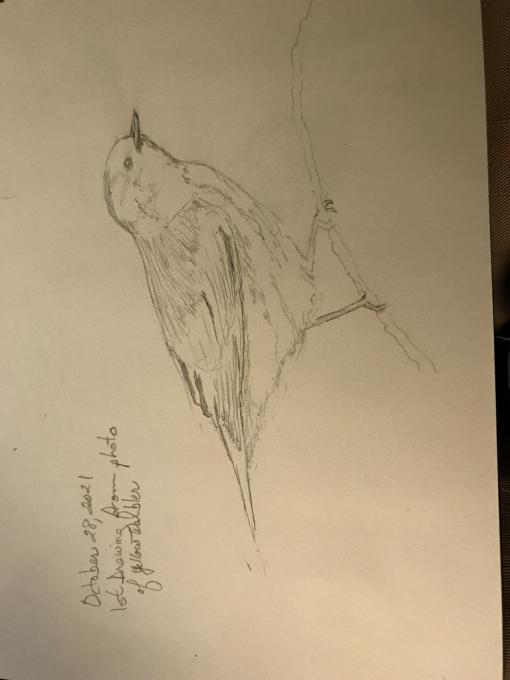
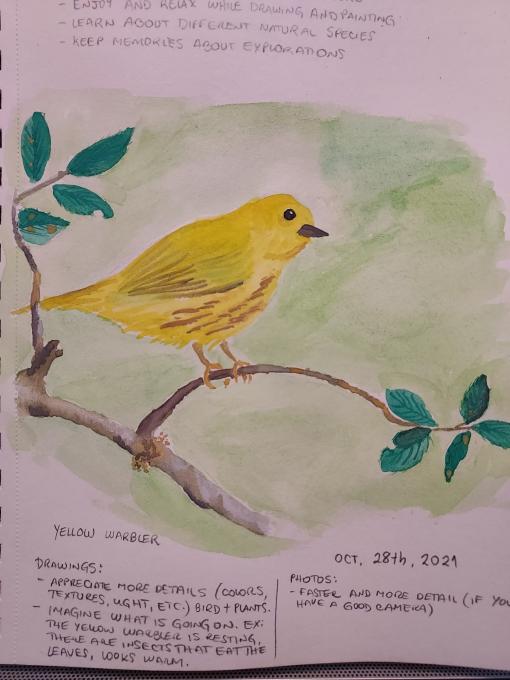
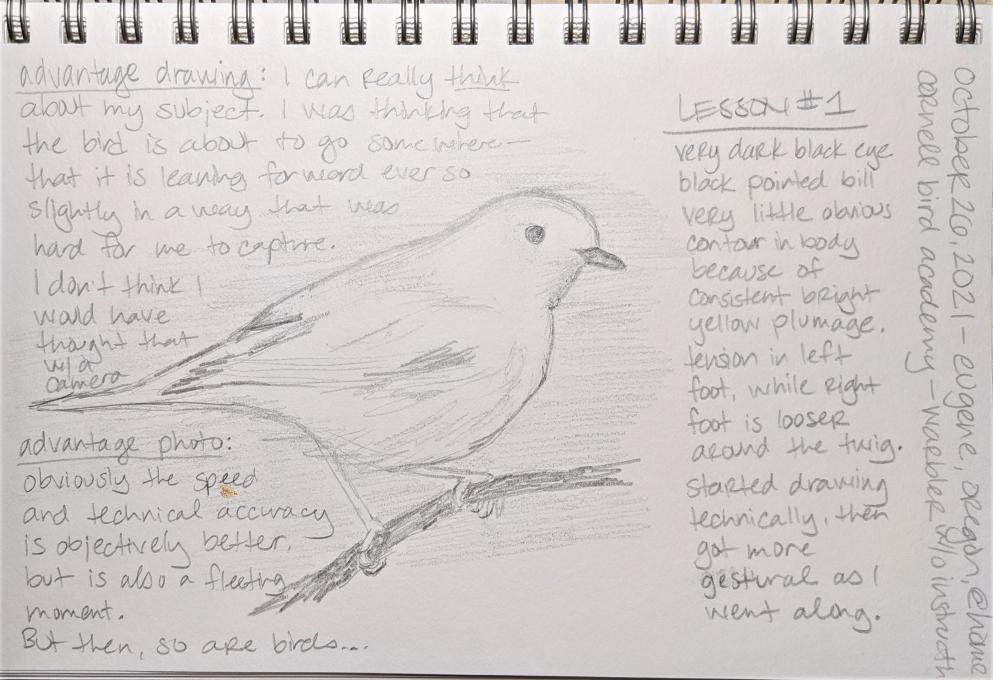
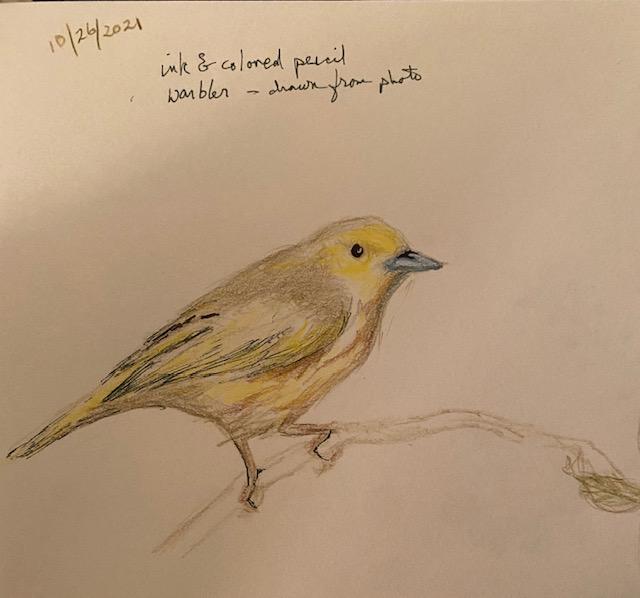
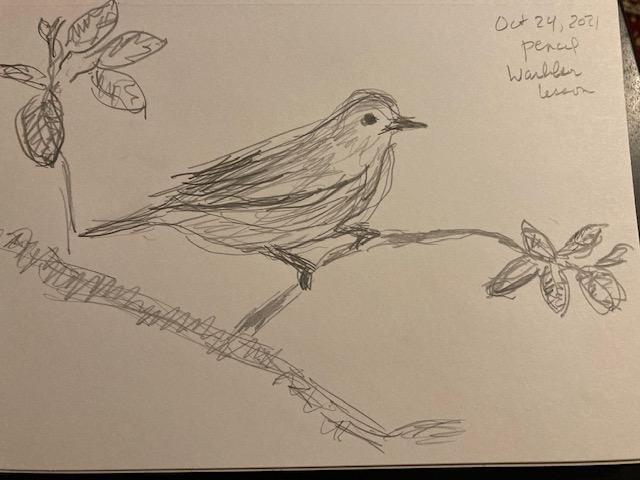
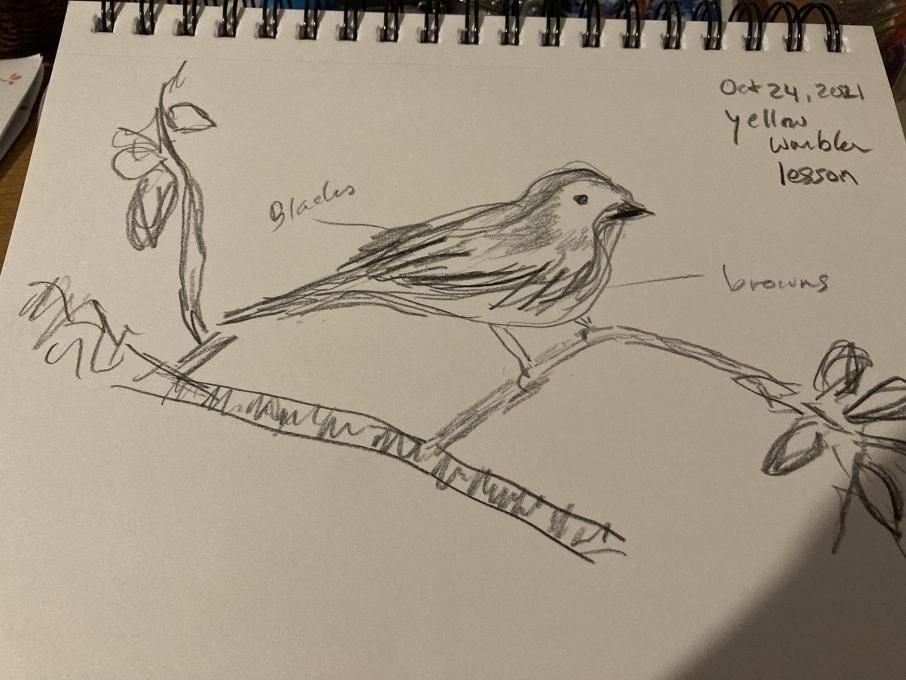
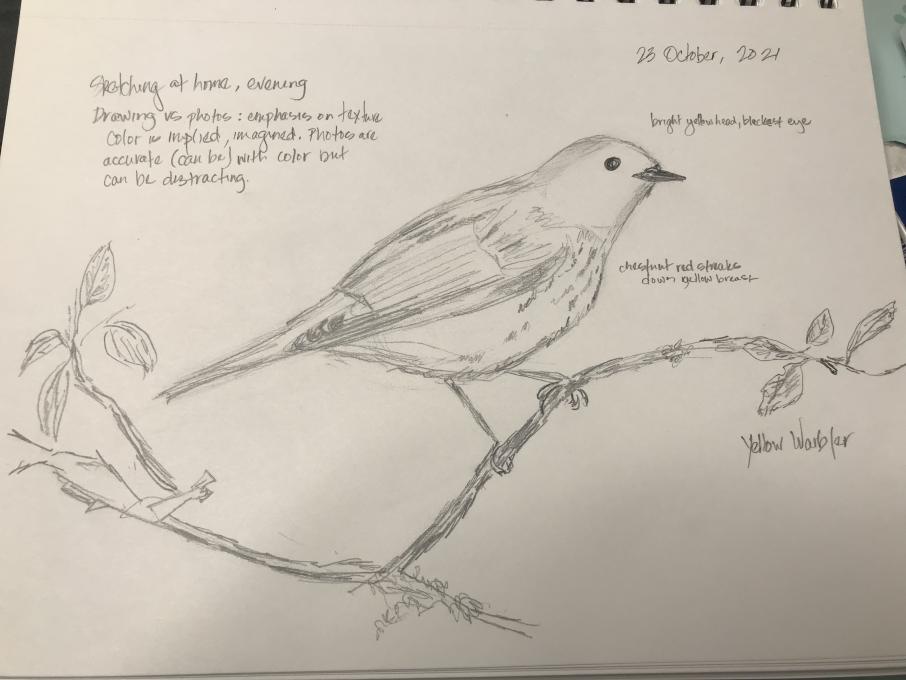
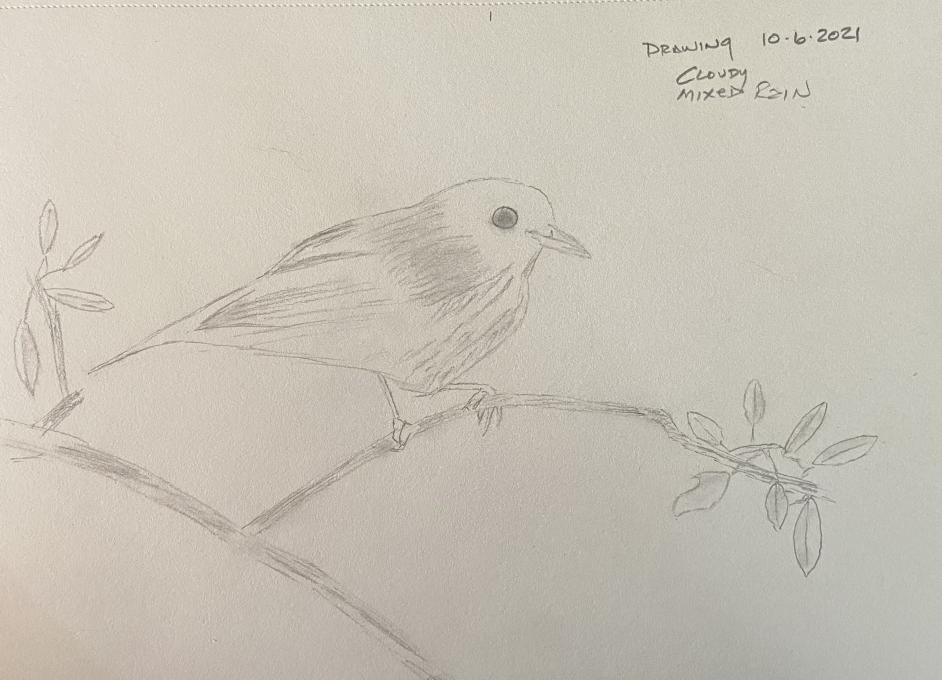
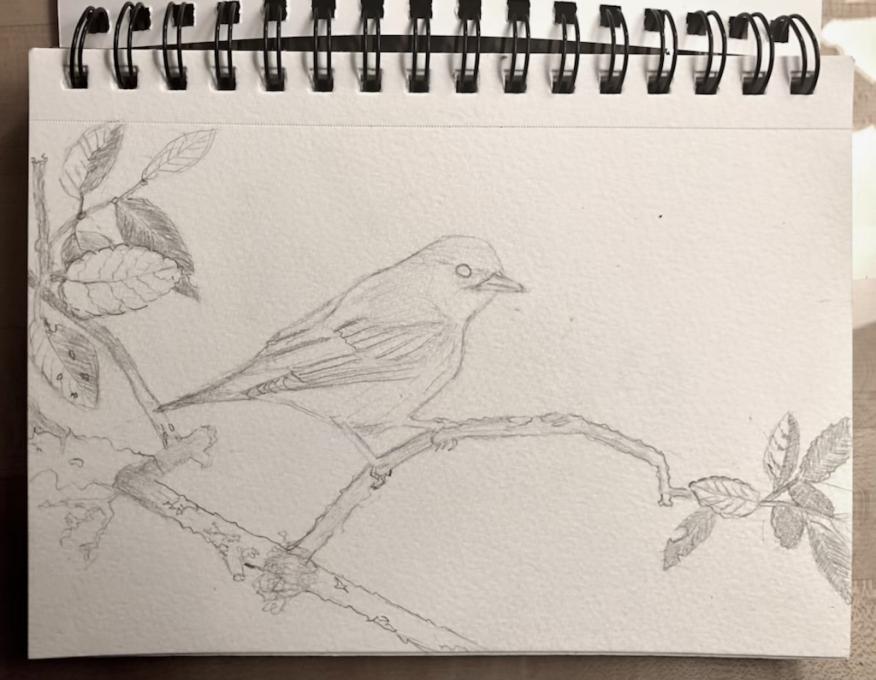
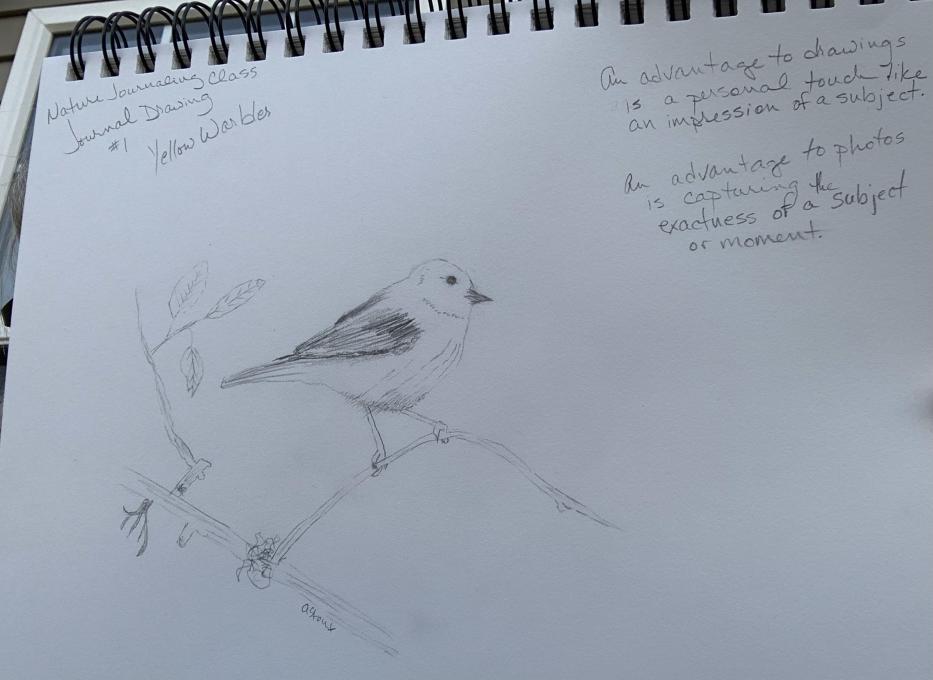
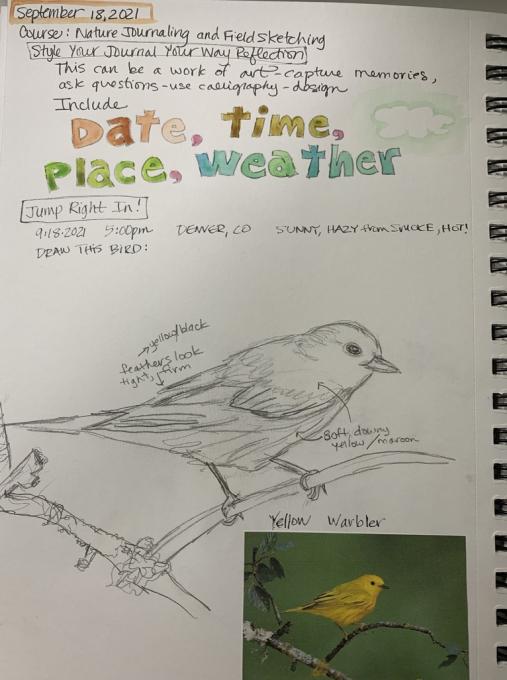
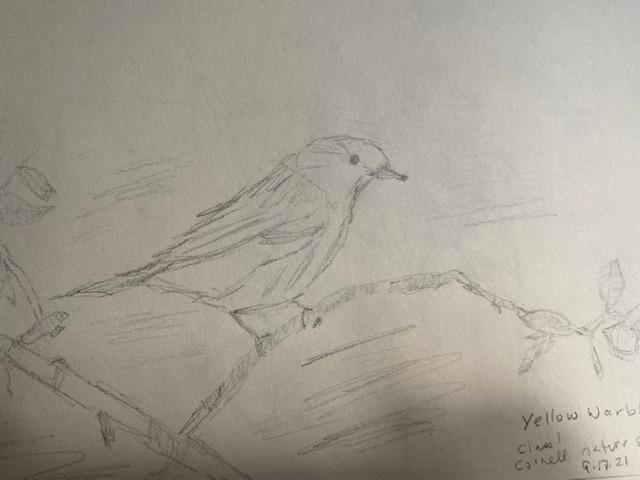
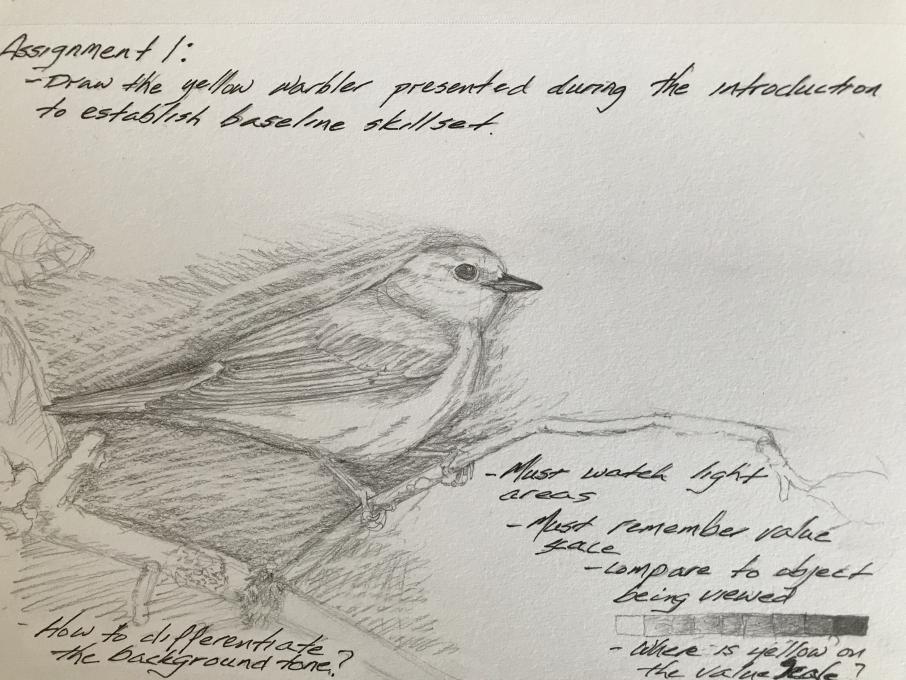 As you can see the proportions are off and values aren’t necessarily interesting to view. I was struck by the ease that one of the sample journal artists drew his birds. They were believable images.
I really want to capture the essence of what I am seeing. My feelings about the subject.
So much to learn and practice as I ease into another phase of life. How can I share the importance of small spider mites?
Anytime I post a drawing I am afraid of what I didn’t accomplish or portray. Once it is posted it is available to the world at large for critical view.
As you can see the proportions are off and values aren’t necessarily interesting to view. I was struck by the ease that one of the sample journal artists drew his birds. They were believable images.
I really want to capture the essence of what I am seeing. My feelings about the subject.
So much to learn and practice as I ease into another phase of life. How can I share the importance of small spider mites?
Anytime I post a drawing I am afraid of what I didn’t accomplish or portray. Once it is posted it is available to the world at large for critical view.